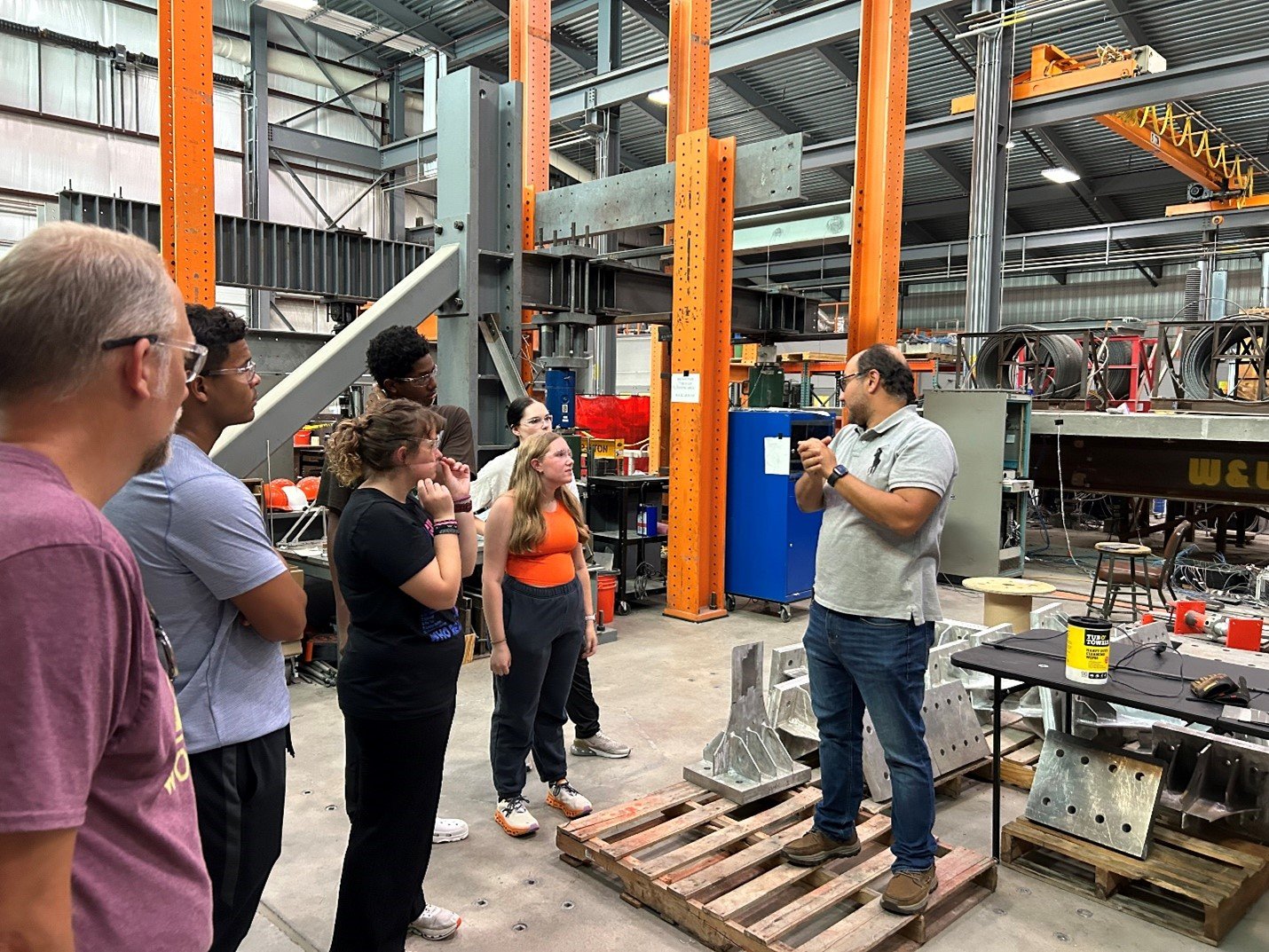2024 Summer Bridge
The Oklahoma State University’s College of Engineering, Architecture, and Technology (CEAT) hosted their annual Summer Bridge program this year during the end of July and early August. This program is designed for incoming CEAT freshmen, with the purpose of helping them to be well prepared for their transition from high school to college, in particular the rigors of pursuing an engineering degree. Students in need of remedial coursework or those who are identified as at-risk for future success are invited, as are other students desiring to hit their degree programs with a “running start”. Preparatory courses in math and engineering science topics are presented, along with seminars addressing study skills and using university resources. In addition, students take several modules that introduce them to the various disciplines available within CEAT. Over 250 students participated in this year’s program.
The civil and environmental engineering modules for this year’s Summer Bridge program once again had a transportation theme, focusing on transportation infrastructure. Eight students selected this module and met three consecutive afternoons in late July, 2024 to participate. This year’s group were all from Oklahoma high schools, and was evenly split between male and female students. The first set of activities took place in Endeavor, CEAT’s undergraduate teaching facility. Dr. Emerson and Dr. Wilber, faculty members in the School of Civil and Environmental Engineering, began by introducing themselves and their academic and professional backgrounds. This was followed by a summary of the broad field of civil and environmental engineering, with particular focus on the transportation aspects of the field. Students were asked about their interests in civil engineering.
Professor Emerson demonstrates ways to minimize buckling in a truss member.
The first hands-on activity of the module involved using Bridge Designer, (https://bridgedesigner.org) an educational software program that allows design and virtual testing of a variety of bridges. It is very user-friendly while giving the user a wealth of useful information about the performance of the bridge they have designed. Features include testing of a dynamic load (i.e. a truck driving across the bridge), along with an analysis of the compression or tension loads applied to every member of the bridge. It also features a hypothetical cost analysis to allow relative cost comparisons of different designs. Designers are able to adjust their designs, varying truss configuration, member sizes and materials, and work toward an optimal design that functions properly (that is, allow the truck to successfully cross) while minimizing costs. Given a specific set of parameters (e.g. span and deck requirements), teams of students can compete to see which team can design and test a successful bridge for the lowest cost.
The next activity was the construction of a scale model of the bridge they just designed. The specifications given for Bridge Designer activity called for a 24-foot bridge; the teams’ scale model was specified to be 24 inches. The teams are also limited to specified materials (popsicle sticks and hot-glue) and a total construction time of three hours. During this activity, teams learn about the importance of certain structural elements (such as the connections between the truss and the deck) as well as how to minimize buckling of key structural members. Every team successfully completed construction in the time allowed.
Prof. Emerson loads a bridge to complete collapse.
The final day of the module included two primary activities: testing of the scale-model bridges and a tour of the Bert Cooper Lab, the school’s research facility for structural and materials engineering. During the tour, students were introduced to a wide range of research projects, many of them sponsored by ODOT or other transportation agencies. These research projects are put in the broader context of the US’s transportation infrastructure, as well as how they address specific engineering challenges faced by transportation engineers.
Testing was performed on a hydraulic loading device built specifically for bridges of this size. A hydraulic arm provides a downward load on the center of the bridge deck, a load that is applied incrementally so observers can see the impact of the load over the structure. Loads are applied until the bridge fails, either by a catastrophic break, or an unacceptable level of deflection. Connection failures and member buckling were the most common causes of failure. Each bridge presented an opportunity to illustrate some basic principles of structural or materials engineering. Potential improvements in both design and construction were then discussed.
Professor Mohamed Soliman describes some of his research with structural steel and aluminum.
Though this year’s group was smaller than in previous years (attributed primarily to there being a larger number of different modules offered), the module was nonetheless well received. The participants were enthusiastic about the module and were very engaged in both the software design aspects, as well as the physical model construction and testing. Some expressed interest in pursuing undergraduate research in transportation structures or materials. All left with a better understanding of transportation infrastructure and the role research contributes to its improvement. They were also informed about opportunities available to them as students, including the ODOT design squad, internships, and student organizations.



